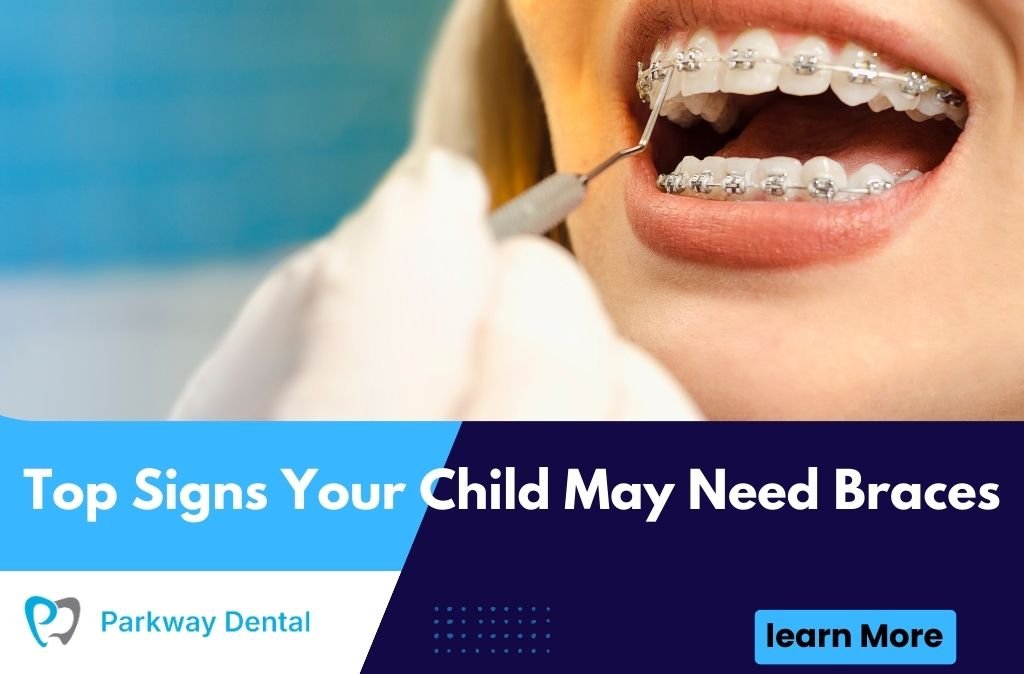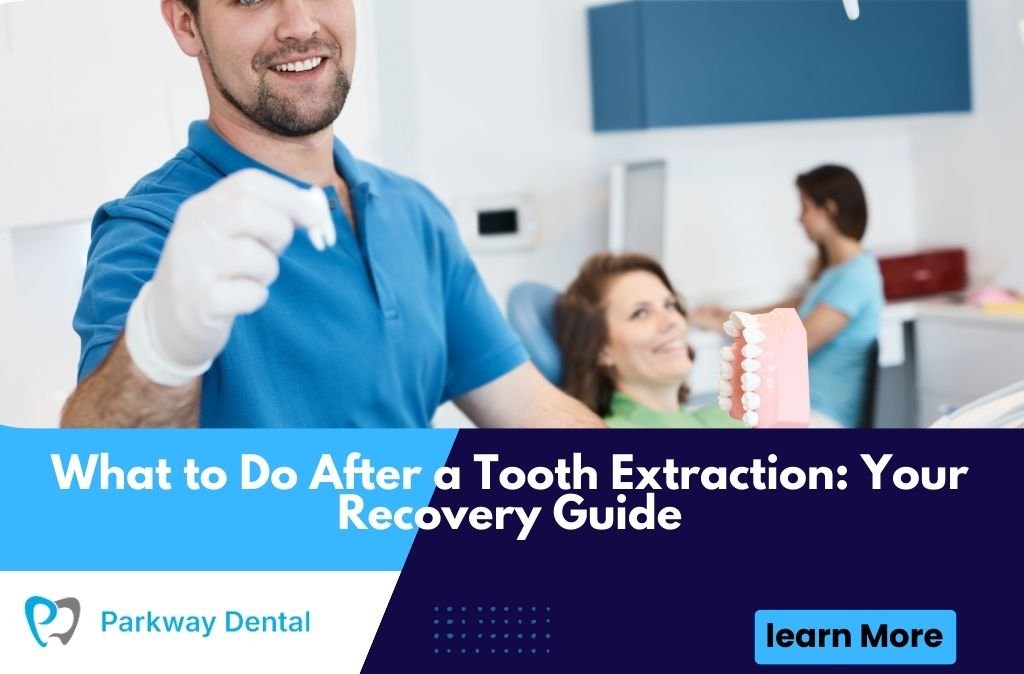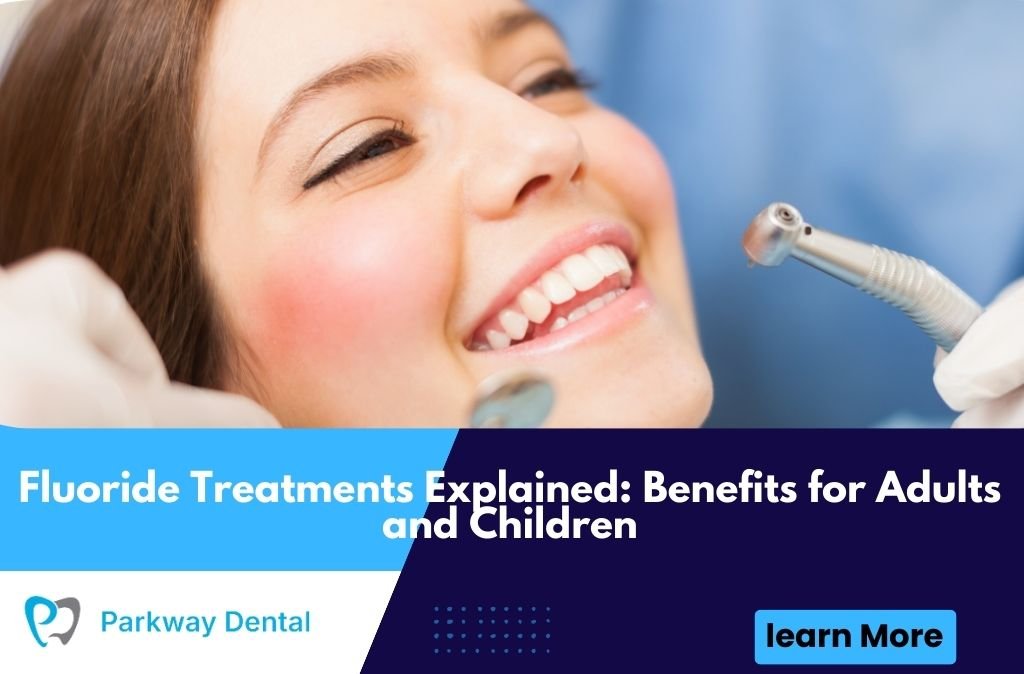As parents, we all want our children to grow up with a healthy, confident smile. But sometimes, dental misalignment or jaw issues develop as children’s teeth grow, and these problems may require orthodontic treatment. Recognizing the top signs your child may need braces can help you take action early and ensure the best results.
This guide explores the key signs, benefits of early orthodontic evaluations, and what parents should know about treatment. By the end, you’ll have a clear understanding of when and why your child might need braces—and how orthodontic care can transform their oral health and confidence.
Why Orthodontic Care for Kids Matters
Orthodontic treatment isn’t just about creating a straight smile. It also plays a major role in oral health, speech, and bite function. Misaligned teeth can lead to difficulties in chewing, jaw pain, and even long-term dental issues. By identifying problems early, orthodontists can guide jaw development, prevent complex treatments later, and build self-esteem.
Early Signs That Your Child May Need Braces
Recognizing the early signs your child may need braces is essential for timely treatment. Issues like crowded teeth, gaps, frequent mouth breathing, or bite problems such as overbite and underbite should not be ignored. Early orthodontic evaluation helps prevent complications and ensures healthy, confident smiles as kids grow.
Crowded or Overlapping Teeth
One of the most common signs your child may need braces is when teeth appear crowded or overlap each other. This happens when there isn’t enough space in the jaw for permanent teeth to erupt properly. Crowding not only affects appearance but also makes it difficult to brush and floss effectively, increasing the risk of cavities and gum disease.
Gaps Between Teeth
Large gaps between teeth, especially when permanent teeth have already erupted, can indicate spacing issues. While small gaps are normal as baby teeth fall out, persistent gaps may suggest the need for orthodontic treatment to ensure proper alignment.
Early or Late Loss of Baby Teeth
Children who lose baby teeth too early may face alignment problems when permanent teeth come in. Similarly, if baby teeth stay in place for too long, permanent teeth may erupt incorrectly. Both situations are warning signs for orthodontic care.
Bite Issues (Overbite, Underbite, Crossbite, Open Bite)
Misaligned bites are clear indicators of orthodontic problems:
- Overbite: Upper front teeth extend far over lower teeth.
- Underbite: Lower teeth protrude past the upper teeth.
- Crossbite: Some upper teeth sit inside the lower teeth.
- Open bite: Upper and lower teeth don’t meet when the mouth is closed.
Bite problems can affect chewing, speech, and jaw health if left untreated.
Difficulty Chewing or Biting
If your child often bites their cheek, lips, or has trouble chewing food, it may be due to improper alignment. This is a strong sign that braces may be needed.
Mouth Breathing or Speech Problems
Chronic mouth breathing or speech difficulties, like lisping, can be linked to misaligned teeth or jaw development issues. Orthodontic treatment can help correct these problems while improving overall oral function.
Thumb-Sucking Beyond Age 4
Prolonged thumb-sucking or pacifier use can push teeth out of alignment and create bite problems. If your child continues these habits, orthodontic evaluation may be necessary.
Jaw Pain or Clicking Sounds
Clicking noises or discomfort in the jaw while chewing may indicate bite misalignment. Braces or other orthodontic devices can help realign the jaw and relieve these issues.
Why Early Orthodontic Evaluation Is Important
Orthodontists recommend a child’s first evaluation by age 7. At this stage, orthodontists can identify early warning signs and decide whether treatment should begin immediately or later. Not every child will need braces right away, but early detection helps prevent more severe problems in the future.
Common Treatments for Children Who Need Braces
There are several common treatments for children who need braces, including traditional metal braces, ceramic braces, clear aligners, palatal expanders, and retainers. Each option addresses alignment and bite issues differently. An orthodontist will recommend the most suitable treatment based on the child’s dental growth, complexity of misalignment, and oral health.
Traditional Metal Braces
These are the most common orthodontic devices and are highly effective in correcting severe alignment and bite issues.
Ceramic Braces
Ceramic braces work like metal braces but are less visible, making them a popular choice for older children and teens.
Clear Aligners
For mild to moderate cases, clear aligners for kids provide a discreet option. They’re removable, making it easier to maintain oral hygiene.
Palatal Expanders
Expanders help widen the upper jaw to correct crossbites and create space for permanent teeth.
Retainers
After braces, retainers maintain alignment and prevent teeth from shifting back.
The Role of Parents in Orthodontic Care
Parents play a crucial role in helping children adjust to orthodontic treatment. Encouraging proper brushing and flossing, preparing braces-friendly meals, and maintaining a positive attitude can make the experience smoother for kids. Regular dental visits also help track progress and prevent complications.
Long-Term Benefits of Braces for Kids
- Corrects bite issues for better chewing and speech.
- Prevents tooth decay and gum disease caused by misalignment.
- Improves jaw function and reduces pain.
- Boosts confidence and self-esteem.
- Sets the foundation for a healthy, beautiful smile in adulthood.
Conclusion
Identifying the top signs your child may need braces early on can save time, money, and unnecessary stress later. From crowded teeth to bite issues, early orthodontic care ensures your child’s smile develops properly and supports their overall health.
For trusted family orthodontic services, always consult an experienced Dentist in West Roxbury, MA.
FAQs
How do I know if my child really needs braces?
Signs include crowded teeth, gaps, bite issues, or difficulty chewing. An orthodontic evaluation by age 7 provides a clear answer.
What is the rule of 7 in pediatric dentistry?
It means children should have their first orthodontic checkup by age 7 to catch potential problems early.
What age do dentists start cleaning kids’ teeth?
Dental cleanings typically begin around age 2–3, once most baby teeth have erupted.
Who does a child see for braces?
Children see an orthodontist, a dental specialist trained to correct alignment and bite issues.
What qualifies a child for braces?
Crowding, gaps, overbites, underbites, crossbites, and chewing or speech difficulties often qualify children for braces.
What’s the best age for a kid to get braces?
Most children start braces between ages 9–14, but evaluations should begin by age 7.
How long do braces stay on?
On average, braces remain for 18–24 months, though complex cases may take longer.
What is the best color for braces?
Popular choices for kids include blue, green, or pink. Clear or silver are discreet options.
Should a 7-year-old have braces?
Not always. Some may need early treatment, while others can wait. An orthodontist will recommend the best timing.
How much do braces cost for an 8-year-old?
The cost varies but generally ranges from $3,000–$7,000 depending on the type of braces and treatment complexity.






